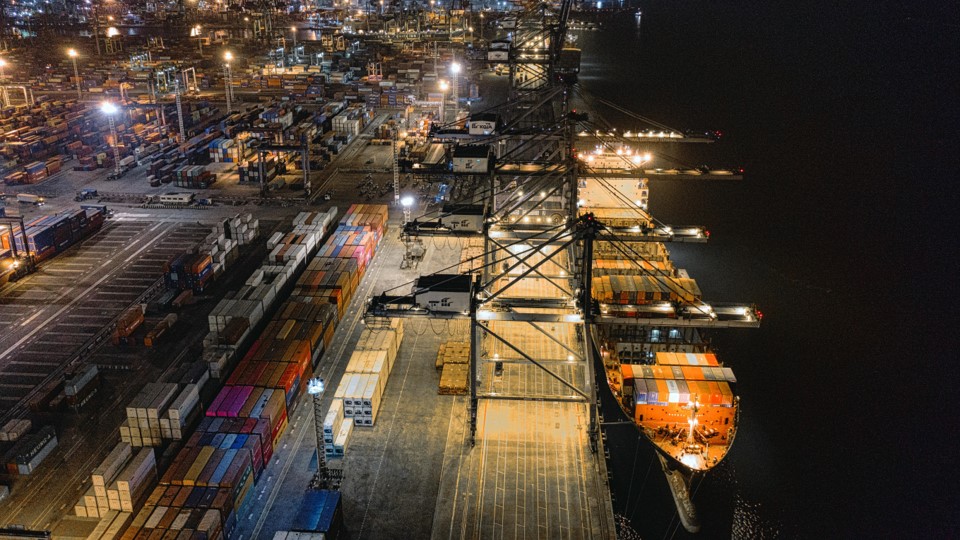Global supply chains struggle to ensure reasonable prices for their products. International events, such as wars, natural disasters and national crisis have a direct impact on its performance. These disruptions can produce operational inefficiencies, production delays or increasing costs, showing the hidden, but real, fragile side of supply chains.
However, each sector has an individual responsibility on its own success. In the case of maritime commercial transport, indispensable for global commerce, the container ports can provide proper frameworks to protect themselves from the effect of external disruptions. In this scenario, an accurate use of data can boost and guarantee the success of the proposed actions.
Since 2020, the World Bank and S&P Global Market Intelligence have published the Container Port Performance Index (CPPI) to evaluate the efficiency of container ports. This index assesses operational efficiency, infrastructure quality, connectivity to inland transport, and other factors to evaluate and rank ports efficiency, aiding stakeholders to identify strengths, weaknesses, and opportunities for improvement.
Key considerations to resilience builder container ports include fostering the adoption of innovation and digital technologies to improve data flows to streamline operational excellence, involve supply stakeholders in the ecosystem to enhance disruptions’ management, and invest in green infrastructure and hinterland connection.
Summing up the CPPI Report, it is necessary to develop and monitor key performance operational indicators in order to pinpoint current inefficiencies, in the first place, and enable then intelligent decisions to optimize port-logistics and safeguard supply chains from global exemptions. This strategy can enhance port competitiveness globally, ensuring the continuous flow of goods, maintaining stocked shelves and stabilizing prices during times of global uncertainty.
“Over 80% of international trade is transported via sea routes, with a substantial portion carried in containers. High-performing ports attract foreign investment, support local industries, create jobs, and boost income levels, fostering sustainable economic development.”
The main inputs and contributions are:
- Recent international events have proven that the supply chains are more fragile than ever. Their sensibility against external disruptions can have a huge impact, with examples like Ukraine’s war effect on the exacerbation of food insecurity on sub-Saharan Africa, which has raised transportation costs up to around 50% of its prices.
- Supply chain disruptions have direct consequences beyond consumer goods, affecting industries causing inventory shortages, operational inefficiencies, production delays, and heightened costs that impact developing economies.
- However, ports and terminals, particularly for containers, can often be the main sources of shipment delays, supply chain exemptions, additional costs, and reduced competitiveness.
- Container ports are crucial for global trade, handling over 80% of international trade through efficient operations that reduce costs and time, enhance export competitiveness to increase income levels, support local ecosystems and dynamize job creation and foster sustainable economic growth.
- Port performance is also a key consideration for container shipping lines that operate liner services on fixed schedules. Port efficiency and turnaround time at all call ports are relevant subjects for operators, and monitoring port performance has become an increasingly important undertaking in the competitive landscape.
- The Container Port Performance Index (CPPI) assesses over 400 global ports based on indicators like operational efficiency, infrastructure quality and connectivity to inland transportation networks, among others. They are selected to aid stakeholders in identifying strengths, weaknesses, improvement opportunities and promote innovative enhacements in global port operations that will ultimately benefit all public and private stakeholders.
- Digitalization offers an opportunity to measure and compare container port performance in a robust and reliable manner. New technologies, increased digitalization and growing willingness on the part of industry stakeholders to work collectively toward system-wide improvements have created the capacity and opportunity to measure and compare container port performance.
- A quality system for data collection is vital to create a reliable design of performance metrics. Data has become a key element in decision making, as its analysis will lead towards accurate decisions on the direction of investments in infrastructure and technology, which will collaborate on the protection against unforeseen disruptions.
- The data provided gives support information to make data-driven investment decisions, to promote operational excellence by providing with criteria of prioritization and order on these activities.
- Continuous improvement is based on digital transformation, innovation and advanced technologies, as they entail efficiency and operational optimization. The CPPI also encourages other ports to do so, by benchmarking the top-ranking operational ones and giving examples of success regarding their transformation.
“The shift towards digitalization can streamline processes, enhance data accuracy, and reduce operational costs, leading to more efficient and resilient port operations.”




Leave a Reply